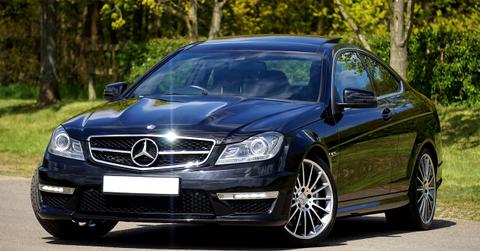Mercedes-Benz Will Electrify All of Its Models By 2020
In five years, every option from Mercedes-Benz will feature a hybrid or fully electric version of their model in a recent announcement from Daimler. In order to prepare for lower profits from EV sales, they'll also be saving $4.8 billion in planning and development.
Updated Nov. 19 2020, 9:38 p.m. ET
German car manufacturer Daimler, the parent company to Mercedes-Benz, is planning to electrify all of their models in the next five years. In order to achieve this goal, they’ll be attempting to save nearly $4.8 million U.S. due to lower profits from electric vehicles. Daimler joins many other car manufacturers that are announcing their transition to the EV market.
Mercedes-Benz was originally slated to have 10 EQ models by 2022, and their goal is for these vehicles to reach anywhere from 15% to 25% of total sales by 2025. “EQ” stands for “Electronic Intelligence,” and it's how their EVs will be branded in the future. With this new announcement, they’ll be offering 50 different hybrid and fully electric editions of their models. By 2020, their Smart brand will no longer be equipped on gas-powered vehicles.
Their first model, labeled as a “Concept EQ,” was first shown off at the Paris Motor Show in 2016. It’s an entry-level SUV that features two electric motors and will have a range of 310 miles when it’s released. Other features include all-wheel drive and two cameras that will display live feed of traffic behind the car instead of having side mirrors. Expected retail price for the vehicle will be around $45,000.
However, this transition won’t be simple for the Mercedes-Benz brand. Each sale of their EQ will represent lower profits than the internal combustion engine alternative. That’s due to the more expensive cost of placing batteries inside of them. EVs will be manufactured in the same plants as traditional vehicles and rates will be adjusted based on demand.
"In the beginning of the cycle we believe that we will have to face a significantly lower margin,” Frank Lindenberg, Vice President of Finance and Controlling at Mercedes-Benz, said at the announcement. “For some vehicles half of the margin of the vehicles they replace...We are still aiming for a 10 percent return on sales, but have to be prepared for a kind of transition, with a corridor of 8 to 10 percent.”
To prepare for lower profits, Daimler has issued a plan to save 4 billion euros ($4.8 billion US) by 2025, when the EQ vehicles should reach up to a quarter of their total sales. At this point, there would be enough parity between both the ICE and EVs that profits could equal out. According to Reuters, this will be achieved by saving “1 billion euros from fixed costs, and another billion from research and development and capital expenditure.”
Another way Daimler will be able to cut costs is importing more electric parts instead of creating them from scratch. That combined with being able to create both versions of these vehicles in the same manufacturing plants should save them a lot of money. It’s a steep transition in a small amount of time, but they’ll be joining many other manufacturers that will be offering EV lineups as early as 2019.
